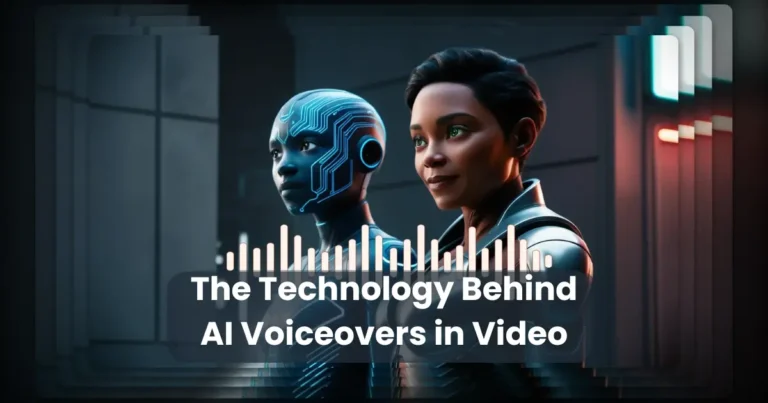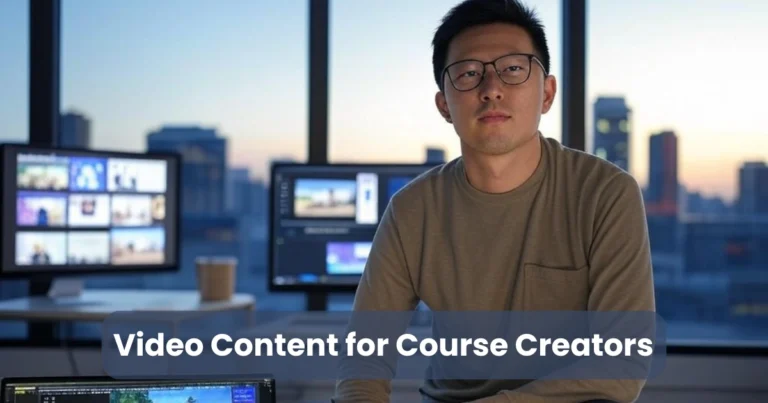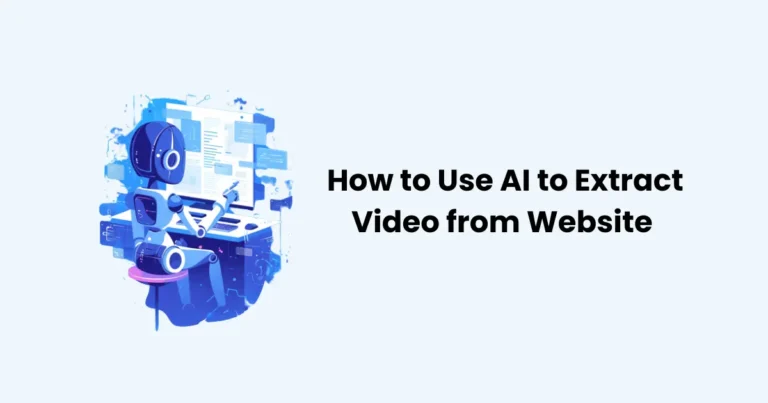Creating Video Out of Storyboards with AI

Contents
- 1 Understanding Storyboards and Their Role in Video Creation
- 2 How AI Transforms Storyboards into Videos
- 3 Best AI Tools for Converting Storyboards to Videos
- 4 Step-by-Step Guide to Creating Video Out of Storyboards with AI
- 4.1 Step 1: Prepare Your Storyboard
- 4.2 Step 2: Choose an AI-Powered Tool
- 4.3 Step 3: Upload Storyboard Frames
- 4.4 Step 4: Apply AI Animation & Motion Effects
- 4.5 Step 5: Add AI-Generated Voiceovers & Sound Effects
- 4.6 Step 6: Refine & Edit Using AI Tools
- 4.7 Step 7: Export & Finalize Your AI-Generated Video
- 5 Advantages of Using AI for Storyboard-Based Video Creation
- 5.1 1. Faster Production Process
- 5.2 2. Cost-Effective Solution
- 5.3 3. Easy Accessibility for All Skill Levels
- 5.4 4. Enhanced Creativity & Innovation
- 5.5 5. High-Quality Output with Minimal Effort
- 5.6 6. Improved Efficiency with AI Voiceovers & Sound Design
- 5.7 7. Scalable for Different Content Needs
- 5.8 8. Seamless Editing & Customization
- 6 Challenges and Limitations of AI Video Generation
- 7 Future Trends in AI-Powered Storyboard to Video Conversion
- 7.1 1. Advanced AI Animation & Motion Capture
- 7.2 2. Real-Time AI Video Generation
- 7.3 3. AI-Generated 3D Animation from 2D Storyboards
- 7.4 4. Personalized AI-Generated Content
- 7.5 5. AI Integration with Augmented Reality (AR) & Virtual Reality (VR)
- 7.6 6. AI-Enhanced Lip-Syncing & Voiceovers
- 7.7 7. Ethical AI and Copyright-Respecting Models
- 7.8 Conclusion
In today’s digital age, creating video out of storyboards with AI has revolutionized the animation and filmmaking process. Traditionally, transforming a storyboard into a fully animated video required time, effort, and technical expertise. However, AI-driven tools have simplified this workflow, enabling creators to generate high-quality videos with minimal manual intervention. By leveraging artificial intelligence, artists, filmmakers, and content creators can enhance efficiency, reduce production costs, and achieve professional results faster than ever before.
This article explores how AI-powered tools assist in creating video out of storyboards with AI, the best software available, and step-by-step guidance for bringing storyboards to life. Whether you’re an aspiring animator or an experienced filmmaker, understanding this process can help you maximize creativity while saving time.
Understanding Storyboards and Their Role in Video Creation
Storyboards serve as the blueprint for video production, providing a visual sequence of scenes that outline the storyline, camera angles, character movements, and transitions. They help directors, animators, and content creators plan each shot effectively before actual production begins.
Key Elements of a Storyboard
A well-structured storyboard includes:
- Frames: Individual panels depicting key scenes.
- Dialogue & Captions: Notes on character speech and scene descriptions.
- Camera Movements: Directions for zooming, panning, or transitions.
- Timing & Sequence: The flow of the video, ensuring smooth storytelling.
Why Storyboards Matter in Video Production
Storyboards play a crucial role in:
- Visualizing Concepts: Converting ideas into structured visual narratives.
- Saving Time & Costs: Reducing unnecessary revisions in later stages.
- Enhancing Collaboration: Helping teams align on creative direction.
With advancements in AI, creating video out of storyboards with AI has become a game-changer, automating transitions from static sketches to dynamic animations.
How AI Transforms Storyboards into Videos
Artificial Intelligence (AI) has revolutionized video production by automating complex animation and editing processes. Instead of manually converting storyboards into animations, AI-driven tools now streamline this transformation, making creating video out of storyboards with AI faster and more efficient.

1. AI-Powered Image Recognition & Scene Analysis
AI can analyze storyboard frames, recognize objects, characters, and backgrounds, and interpret scene transitions. This helps automate:
- Shot composition and framing based on predefined cinematic rules.
- Object tracking, ensuring elements move naturally from one frame to another.
2. Automated Animation & Motion Generation
AI-driven tools apply motion effects to static storyboard images, creating fluid animations. These include:
- Auto-lip syncing for character dialogue.
- AI-powered movement interpolation, ensuring smooth transitions between frames.
3. AI-Based Voiceovers & Sound Synchronization
Some AI platforms can generate voiceovers and synchronize them with character lip movements. Features include:
- Text-to-speech (TTS) technology for lifelike voice narration.
- Automated sound effect integration, aligning with visual elements.
4. AI-Enhanced Video Editing & Rendering
AI optimizes the final video by:
- Applying scene transitions based on storyboard flow.
- Enhancing color correction and lighting for a professional look.
By leveraging these AI-driven features, creating video out of storyboards with AI becomes a seamless process, reducing the need for extensive manual editing and ensuring high-quality video output.
Best AI Tools for Converting Storyboards to Videos
AI-powered tools have transformed the way creators bring storyboards to life, making creating video out of storyboards with AI more accessible and efficient. These tools use automation, machine learning, and deep learning algorithms to generate animations, add motion effects, and enhance video production quality. Below are some of the best AI tools for this process.

1. Runway ML
Best for: AI-powered video editing and motion generation
Runway ML provides a suite of AI-driven video editing features, including automatic background removal, motion tracking, and AI-based frame interpolation. It’s ideal for creators looking to enhance storyboard sequences effortlessly.
2. Synthesia
Best for: AI-generated voiceovers and character animation
Synthesia specializes in AI-powered video creation with realistic AI avatars and voice synchronization. It allows users to convert text scripts into voiceovers, making it useful for storytelling and explainer videos.
3. DeepMotion
Best for: AI-powered motion capture and character animation
DeepMotion transforms storyboard characters into animated models using AI-driven motion capture. It automatically applies lifelike movements to characters, eliminating the need for manual animation.
4. Pika Labs
Best for: AI-assisted animation and video rendering
Pika Labs uses AI to generate animations from static images, making it perfect for turning storyboard frames into dynamic sequences. It enhances transitions and smoothens motion effects.
5. Kaiber AI
Best for: AI-driven visual storytelling
Kaiber AI specializes in transforming images into videos with AI-generated motion effects. It helps create immersive storytelling experiences, making it a great tool for animators and filmmakers.
6. Animoto
Best for: AI-based video editing and slideshow creation
Animoto is a user-friendly AI-powered video editing tool that transforms storyboard images into video presentations. It comes with pre-built templates and AI-assisted effects to streamline the process.
7. Adobe Sensei
Best for: AI-powered automation in professional video editing
Adobe Sensei enhances Adobe Premiere Pro and After Effects with AI-driven automation. It offers features like auto-cutting, smart scene detection, and AI-powered animation tools for refining storyboard-based videos.
These AI tools simplify creating video out of storyboards with AI, making it easier for filmmakers, animators, and content creators to produce high-quality visuals with minimal effort.
Step-by-Step Guide to Creating Video Out of Storyboards with AI
Transforming storyboards into videos has never been easier, thanks to AI-driven tools. Whether you’re an animator, filmmaker, or content creator, creating video out of storyboards with AI can streamline your workflow and enhance production quality. Follow this step-by-step guide to bring your storyboards to life efficiently.

Step 1: Prepare Your Storyboard
Before using AI, ensure your storyboard is well-structured. It should include:
Clear frames with character and background details
Dialogue and captions for scene context
Camera directions like zooms, pans, and cuts
Action notes explaining movement and interactions
Step 2: Choose an AI-Powered Tool
Select the right AI tool based on your needs:
Runway ML – AI-powered motion tracking and video editing
Synthesia – AI avatars and voiceovers
DeepMotion – AI motion capture for characters
Pika Labs – AI animation from static images
Kaiber AI – AI-driven storytelling and transitions
Step 3: Upload Storyboard Frames
Most AI platforms allow users to upload storyboard images. Ensure:
High-resolution images for better animation quality
Proper sequencing to maintain story flow
Separate character layers (if applicable) for AI-driven motion
Step 4: Apply AI Animation & Motion Effects
Use AI automation to add movement to static storyboard frames:
Runway ML / DeepMotion – AI-powered motion tracking
Kaiber AI / Pika Labs – Smooth transition effects
Adobe Sensei – Auto-lip sync and facial animation
Step 5: Add AI-Generated Voiceovers & Sound Effects
AI voiceovers enhance storytelling and reduce production time. Use:
Synthesia – Text-to-speech narration
Animoto – AI-based background music integration
Adobe Sensei – Automated dialogue syncing
Step 6: Refine & Edit Using AI Tools
After applying AI effects, refine your video for a professional look:
Trim and adjust timing for smooth transitions
Enhance visuals with AI color grading
Improve audio by syncing voiceovers with character movements
Step 7: Export & Finalize Your AI-Generated Video
Once satisfied with the edits, export your final video:
Choose the right resolution (HD, 4K)
Optimize for platforms (YouTube, social media, presentations)
Save in MP4 or MOV format for compatibility
Advantages of Using AI for Storyboard-Based Video Creation
AI has revolutionized the way videos are created, making creating video out of storyboards with AI faster, more efficient, and highly accessible. Whether you’re an animator, filmmaker, or marketer, AI-powered tools offer numerous benefits that enhance the entire video production process.

1. Faster Production Process
AI automates complex tasks such as animation, motion tracking, and voice synchronization, significantly reducing production time. Instead of manually animating every frame, AI-driven tools generate smooth transitions and movements within minutes.
2. Cost-Effective Solution
Traditional video production requires hiring animators, editors, and voice actors, which can be expensive. AI-powered tools eliminate the need for extensive manual labor, making creating video out of storyboards with AI a budget-friendly alternative without compromising quality.
3. Easy Accessibility for All Skill Levels
Even beginners can create professional-quality videos using AI tools. Many AI platforms offer drag-and-drop interfaces, automated effects, and pre-built templates, making it easier to transform storyboards into videos without technical expertise.
4. Enhanced Creativity & Innovation
AI unlocks creative possibilities by automating tedious tasks and allowing creators to focus on storytelling. Features like AI-driven animation, deep learning-based motion interpolation, and intelligent scene composition enable unique and visually engaging content.
5. High-Quality Output with Minimal Effort
AI tools ensure polished results by handling complex aspects such as:
Automated facial expressions and lip-syncing for realistic character animations
AI-enhanced color correction for cinematic-quality visuals
Smart scene transitions for smooth storytelling flow
6. Improved Efficiency with AI Voiceovers & Sound Design
AI-generated voiceovers eliminate the need for recording human voices, making narration seamless. AI tools also auto-sync dialogue with characters, saving time on manual lip-sync adjustments. Additionally, AI-powered sound effects enhance immersion by automatically aligning with storyboard scenes.
7. Scalable for Different Content Needs
AI-powered video creation is versatile and can be used for various purposes, including:
Marketing & Advertising – AI-generated promotional videos
Filmmaking & Animation – Story-driven short films and animated sequences
E-Learning & Training – AI-assisted educational content
Social Media Content – Engaging AI-edited videos for platforms like TikTok and Instagram
8. Seamless Editing & Customization
With AI, modifications are quick and hassle-free. If changes are needed, creators can easily adjust:
Storyboard sequences without reanimating everything
Voiceovers using AI text-to-speech conversion
Transitions & effects with AI-assisted recommendations
Challenges and Limitations of AI Video Generation
While creating video out of storyboards with AI offers numerous advantages, there are still some challenges and limitations that users may face. AI-powered tools are constantly evolving, but they are not perfect. Understanding these limitations can help creators make informed decisions and optimize their workflow when using AI for video generation.
1. Limited Creative Control
AI automates much of the video creation process, but it can also restrict creative flexibility. Many AI tools follow predefined algorithms, which may:
Lack unique artistic styles that manual animation offers
Restrict scene composition and customization
Generate repetitive effects, reducing originality
Solution: Creators may need to manually tweak AI-generated results or combine AI with traditional animation techniques for better control.
2. Inconsistent Animation Quality
AI-generated videos may sometimes produce:
Jittery or unnatural movements in animated characters
Mismatched lip-syncing with AI voiceovers
Incorrect physics, lighting, or proportions
These inconsistencies can affect the overall quality and realism of the final video.
Solution: Testing different AI tools, refining settings, and manually correcting frames can help improve results.
3. Dependence on High-Quality Inputs
AI relies on input data to generate accurate results. If storyboard images are:
Low resolution, the output may lack clarity
Poorly structured, AI may misinterpret motion and scene flow
Missing details, AI-generated animations may feel incomplete
Solution: Provide high-quality, well-detailed storyboard frames with clear instructions to achieve better results.
4. Lack of Emotional Depth and Human Touch
AI-generated characters and animations may struggle with:
Expressing complex emotions naturally
Delivering subtle facial expressions and gestures
Capturing human-like interactions realistically
Solution: Manual fine-tuning of keyframes or using hybrid AI-human animation techniques can add emotional depth.
5. AI-Generated Voiceovers Sound Robotic
Although AI voice synthesis has improved, it may still sound:
Monotone or unnatural
Lacking emotional variation
Poorly synced with animated characters
Solution: Using high-end AI voice tools like Synthesia or Murf AI, or incorporating human voice actors, can enhance narration quality.
6. Copyright and Ethical Concerns
AI-generated content raises questions about ownership and copyright. Some key concerns include:
Who owns AI-generated videos?
Are AI-created animations truly original, or do they replicate existing styles?
Do AI tools use copyrighted material to train their models?
Solution: Always review the terms of service for AI tools and ensure compliance with copyright laws.
7. Hardware and Processing Limitations
Advanced AI video generation requires:
High computational power
Cloud-based processing, which may involve additional costs
Longer rendering times for high-quality animations
Low-end systems may struggle with complex AI processing.
Solution: Use cloud-based AI tools that handle processing externally or invest in a more powerful system for local AI rendering.
Future Trends in AI-Powered Storyboard to Video Conversion
As AI technology advances, creating video out of storyboards with AI is becoming more efficient, accessible, and visually compelling. The future of AI-driven video production is filled with promising innovations that will enhance automation, creativity, and realism. Here are some of the key trends shaping the future of AI-powered storyboard-to-video conversion.

1. Advanced AI Animation & Motion Capture
AI will continue to improve its ability to generate smooth and natural animations from static storyboards. Future advancements will include:
AI-powered motion tracking that mimics real human movements
Gesture and facial expression detection for lifelike character emotions
AI-assisted mocap (motion capture) tools that require minimal manual adjustments
These improvements will help creating video out of storyboards with AI become more fluid and natural-looking.
2. Real-Time AI Video Generation
Currently, AI video generation can take time, but future developments will focus on real-time processing. This will allow:
Instant animation previews while editing storyboards
Faster rendering speeds for high-resolution outputs
Live AI-powered video generation based on user prompts
Real-time AI processing will significantly enhance workflow efficiency for animators, marketers, and content creators.
3. AI-Generated 3D Animation from 2D Storyboards
AI is evolving to convert 2D drawings into fully animated 3D models. This will:
Transform flat storyboard sketches into 3D environments
Create dynamic camera movements from static frames
Automatically add depth, lighting, and perspective adjustments
This will make creating video out of storyboards with AI a game-changer for 3D animation production.
4. Personalized AI-Generated Content
AI will soon be able to generate videos tailored to individual preferences. Features may include:
Customizable animation styles based on artistic preferences
AI-generated voiceovers with emotional depth
Dynamic scene adjustments based on user feedback
This level of customization will make AI-powered video production more versatile and user-friendly.
5. AI Integration with Augmented Reality (AR) & Virtual Reality (VR)
With AR and VR gaining traction, AI-powered storyboard-to-video tools will likely expand into immersive content creation. Future possibilities include:
AI-generated 360-degree videos from traditional storyboards
VR-based AI animation tools for interactive storytelling
AI-enhanced AR overlays for real-time video effects
These advancements will redefine how AI-generated videos are experienced and consumed.
6. AI-Enhanced Lip-Syncing & Voiceovers
One of the major improvements will be hyper-realistic voice synchronization. Future AI tools will:
Automatically match lip movements with different languages
Generate emotion-driven speech synthesis
Offer real-time voice modulation for personalized characters
This will make AI-generated animated characters feel more natural and expressive.
7. Ethical AI and Copyright-Respecting Models
As AI-generated content grows, concerns about copyright and originality will lead to:
AI models trained on ethically sourced data
New regulations ensuring fair use of AI-generated content
Tools that prevent plagiarism in AI-created videos
These advancements will ensure AI-powered video creation remains ethical and legally compliant.
Conclusion
The evolution of creating video out of storyboards with AI has transformed video production, making it faster, more accessible, and cost-effective. AI-powered tools streamline the animation process, allowing creators to bring static storyboards to life with minimal effort. From automated motion tracking to real-time video generation, AI continues to redefine the way content is produced.
Despite its advantages, challenges such as limited creative control, inconsistencies in animation quality, and copyright concerns remain. However, with ongoing advancements in AI, these limitations are gradually being addressed, making AI-generated videos more realistic and customizable.
Looking ahead, the future of AI in storyboard-to-video conversion is promising. Features like real-time AI animation, 3D scene generation, enhanced lip-syncing, and integration with AR/VR will further revolutionize the industry. As AI technology advances, creators will have even more tools to refine their storytelling, ensuring higher-quality video content with greater efficiency.
Incorporating AI into the video production process is no longer just a trend—it is becoming an essential tool for animators, marketers, and content creators. By leveraging the right AI tools and combining them with human creativity, storytellers can unlock limitless possibilities in video creation.






